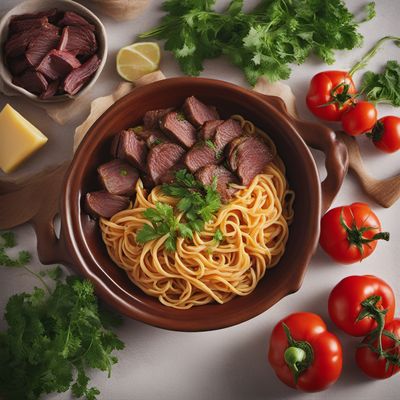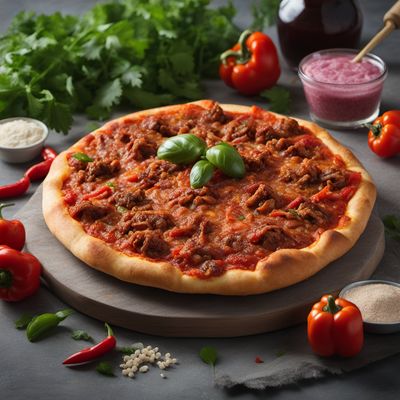
Ingredient
Balsam apple
The Bitter Beauty of Balsam Apple
Balsam apple is a tropical vine fruit with a rough, warty exterior and a vibrant green color. Its flesh is crunchy and watery, while the seeds and pith have a bitter taste. Despite its bitterness, balsam apple is widely used in various cuisines for its unique flavor and potential health benefits.
Origins and history
Balsam apple is native to South Asia but has spread to other tropical regions around the world. It has a long history of culinary and medicinal use, particularly in Indian, Chinese, and Southeast Asian cuisines. The bitter taste of balsam apple is often balanced with other ingredients to create well-rounded dishes.
Nutritional information
Balsam apple is low in calories and carbohydrates, making it a suitable choice for those following a low-calorie or low-carb diet. It is also a good source of vitamins A and C, as well as various minerals. Additionally, balsam apple contains compounds that may have potential health benefits, such as blood sugar regulation and antioxidant properties.
Allergens
Some individuals may be allergic to balsam apple, experiencing symptoms such as itching, swelling, or difficulty breathing. It is advisable to consult with a healthcare professional if you suspect an allergy or have any concerns.
How to select
When selecting balsam apple, look for fruits that are firm and free from blemishes or soft spots. The skin should be vibrant green and have a slightly rough texture. Avoid fruits that are overly ripe or have turned yellow, as they may have a more bitter taste.
Storage recommendations
To prolong the freshness of balsam apple, store it in the refrigerator in a perforated plastic bag or wrapped in a paper towel to absorb excess moisture. It is best consumed within a few days of purchase to enjoy its crisp texture and flavor.
How to produce
Balsam apple can be grown in warm climates with well-drained soil and ample sunlight. It thrives in tropical regions and can be cultivated in home gardens or larger agricultural settings. Regular watering and proper care are essential for optimal growth and fruit production.
Preparation tips
Balsam apple can be prepared in various ways, depending on personal preference and culinary traditions. It is commonly used in stir-fries, soups, curries, and pickles. To reduce its bitterness, balsam apple can be soaked in saltwater or blanched before cooking. Pairing it with ingredients such as garlic, onions, or spices can help balance the flavor.
Culinary uses
Balsam apple is commonly used in Asian cuisines, particularly in dishes from India, China, and Southeast Asia. It is often stir-fried with other vegetables, added to curries, or pickled for a tangy and bitter condiment. Balsam apple is also used in traditional medicine for its potential health benefits.
Availability
Balsam apple is commonly available in tropical regions, including South Asia, Southeast Asia, and parts of Africa and the Caribbean. It can also be found in specialty grocery stores or Asian markets in other parts of the world.
More ingredients from this category
Recipes using Balsam apple » Browse all

Haitian-style Ghameh
Savory Haitian Ghameh: A Fusion of Flavors

Pallubasa Soup
Indonesian Spicy Beef Soup: A Burst of Flavors in Every Spoonful

Burebrot - Serbian Stuffed Bread
Savory Delight: Serbian Stuffed Bread with a Twist

Finnish-style Beef Tartare
Nordic Delight: Finnish Beef Tartare with a Twist

Silpancho with a Twist
Bolivian Delight: Silpancho with a Modern Twist

Venezuelan Hallacas: A Traditional Delight Wrapped in Banana Leaves
Savory Delights: Unveiling the Flavors of Venezuelan Hallacas

Hausfreunde with a Twist
Savory German Delight: Hausfreunde with a Modern Twist

Pittsburgh-inspired Hearty Soup
Steel City Soup: A Hearty Pittsburgh Delight

Russian-Style Stuffed Piroshki
Savory Russian Piroshki: A Delicious Twist on a Classic

Guangxi-style Stuffed Beef Roll
Savory Beef Delight: Guangxi-style Stuffed Beef Roll

Japanese Curry Rice
Savory Delight: A Taste of Japan's Curry Rice

Zanzibar Pizza with a Twist
Savory Delight: Spiced Zanzibar Pizza with a Fusion Twist